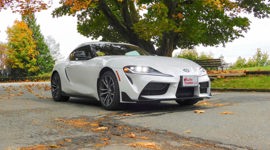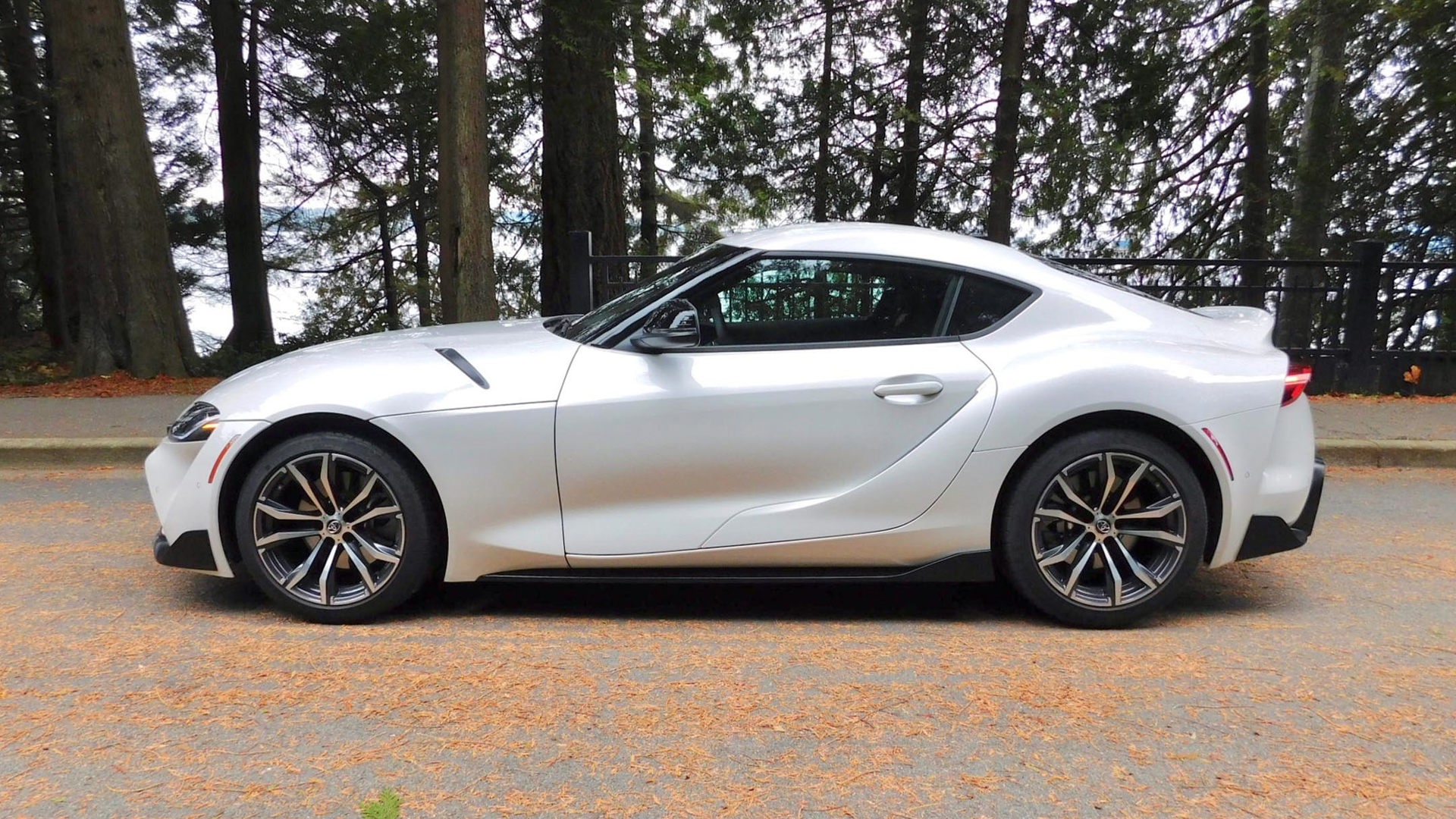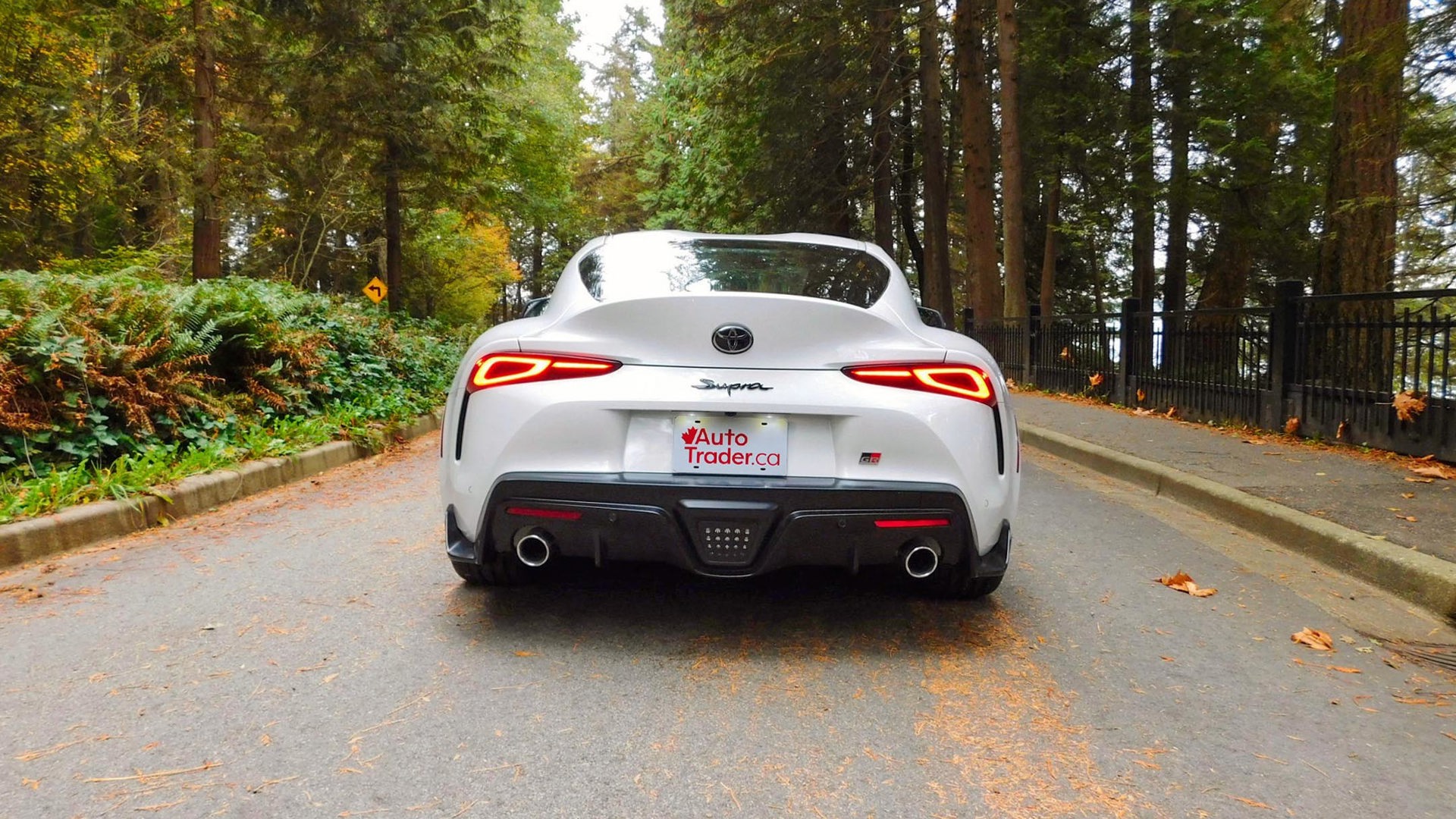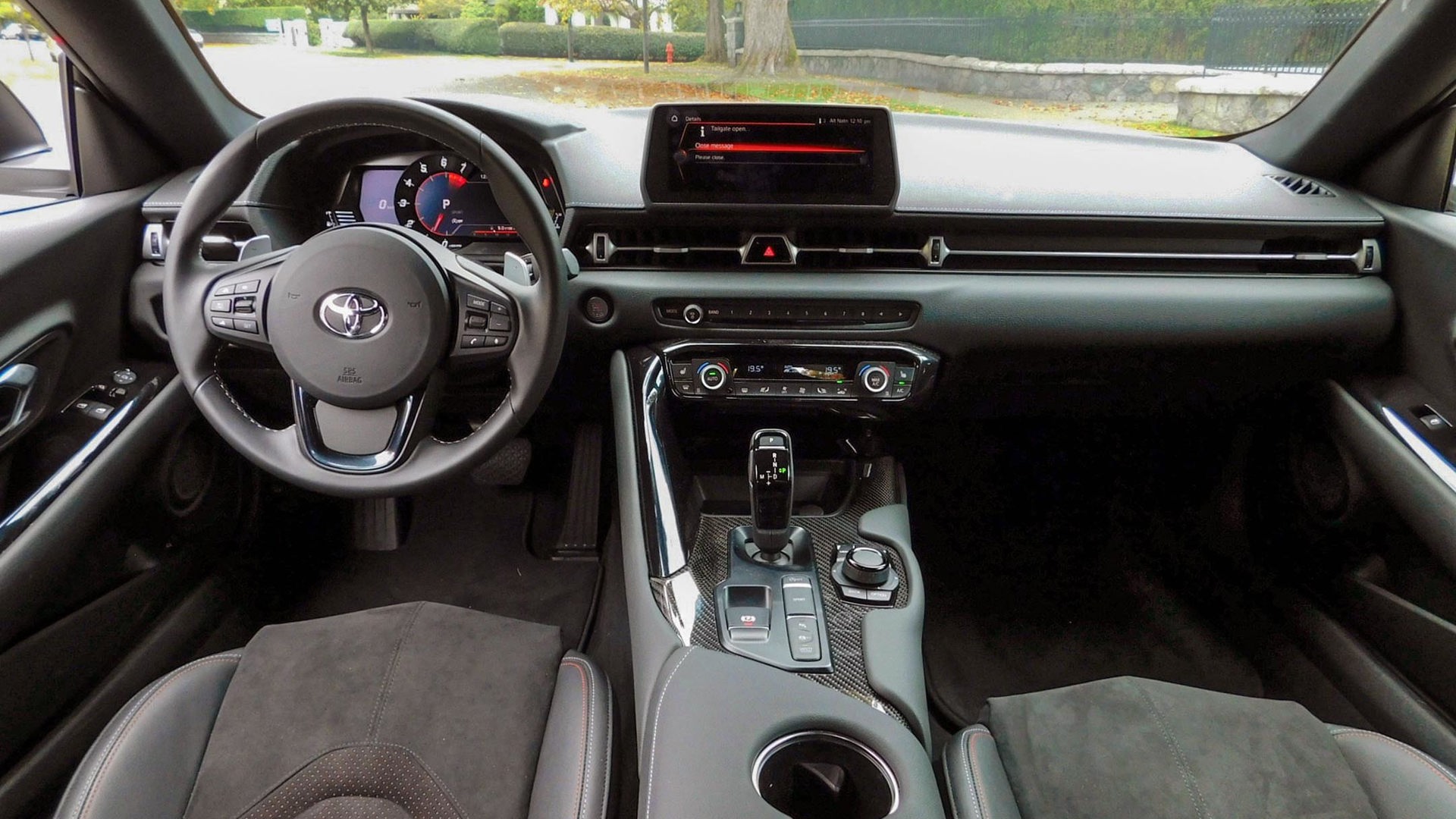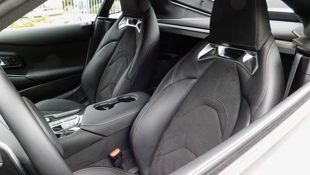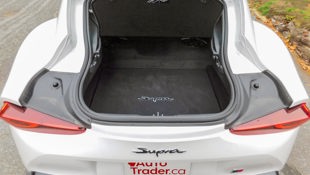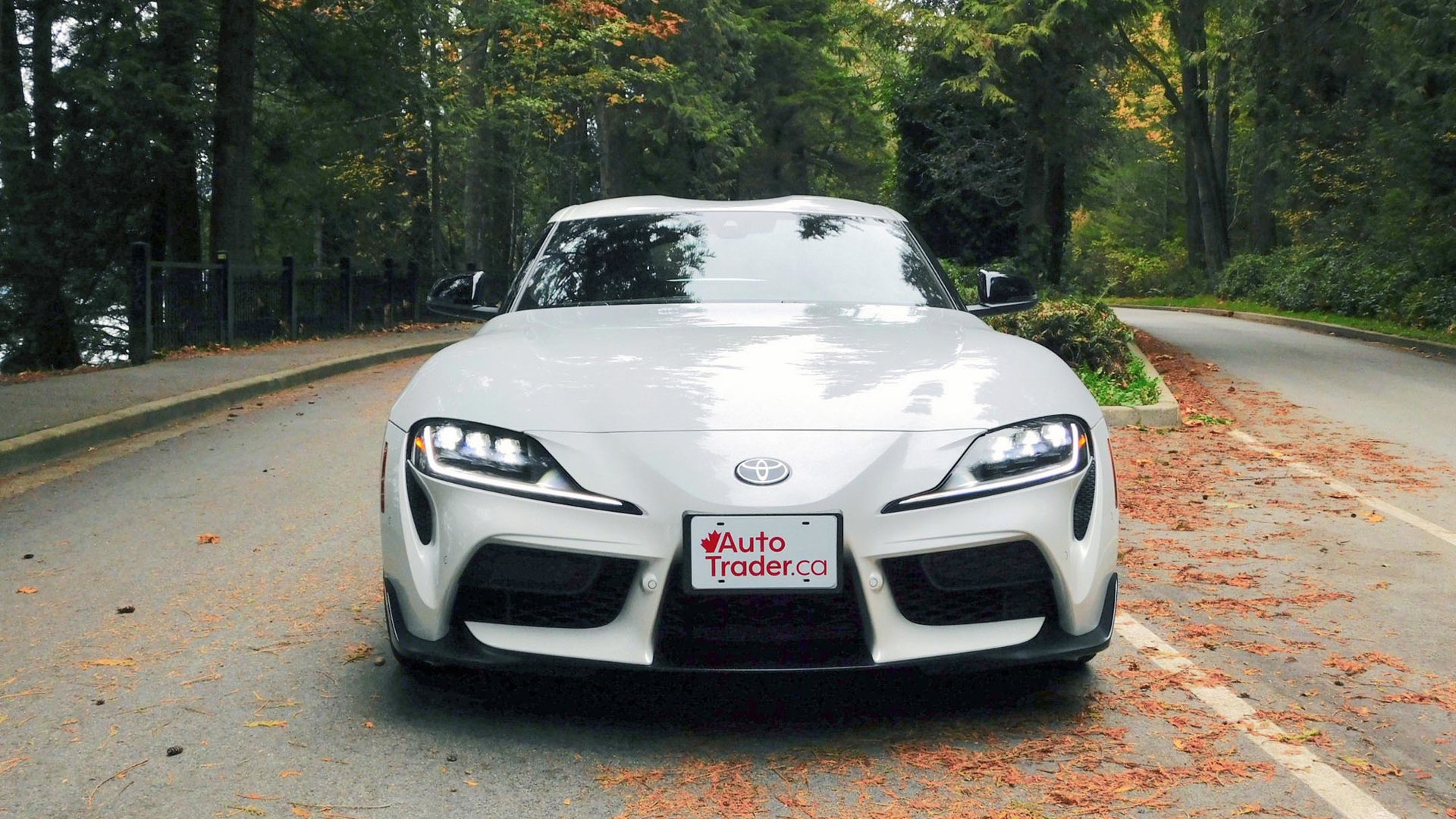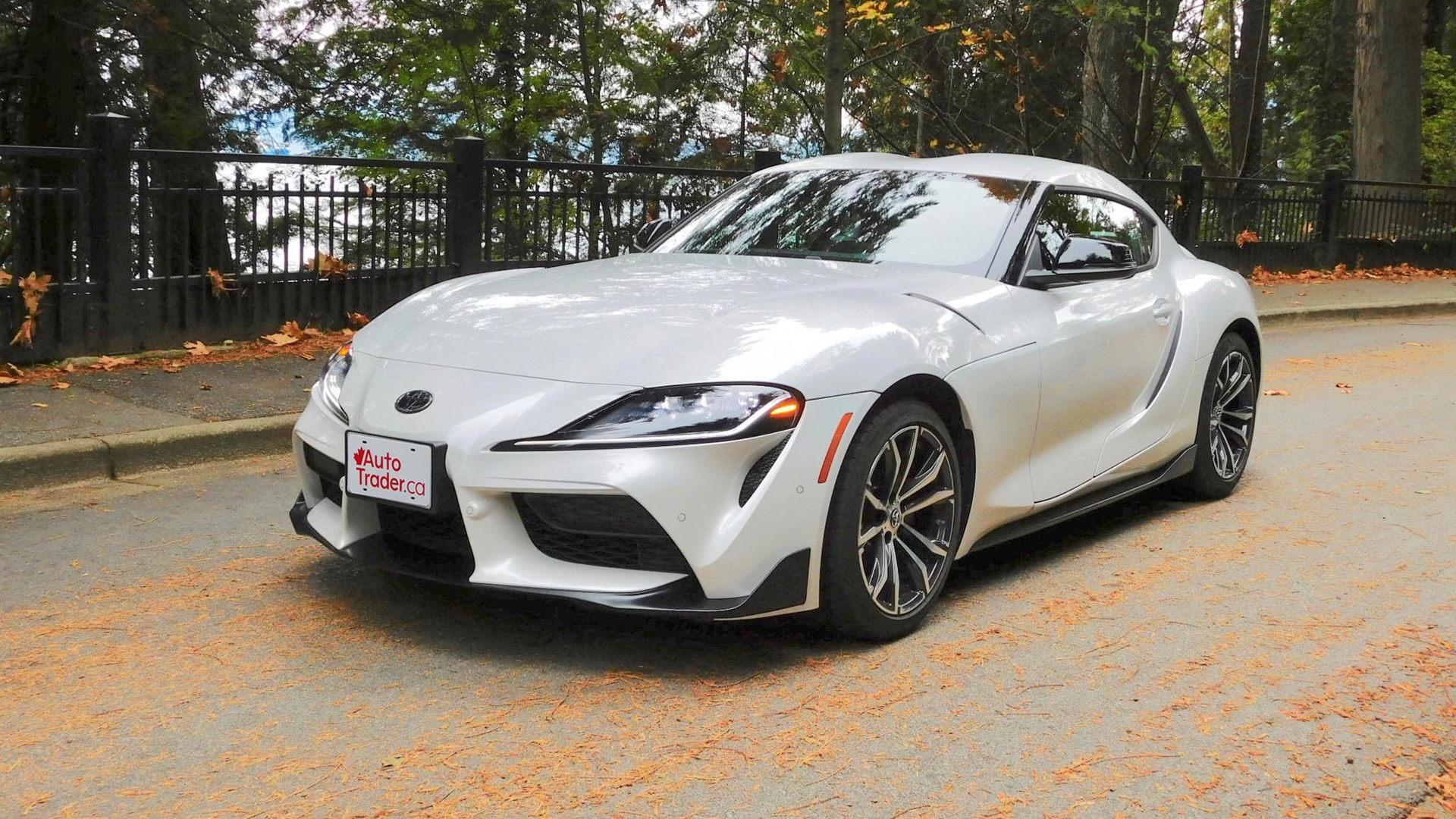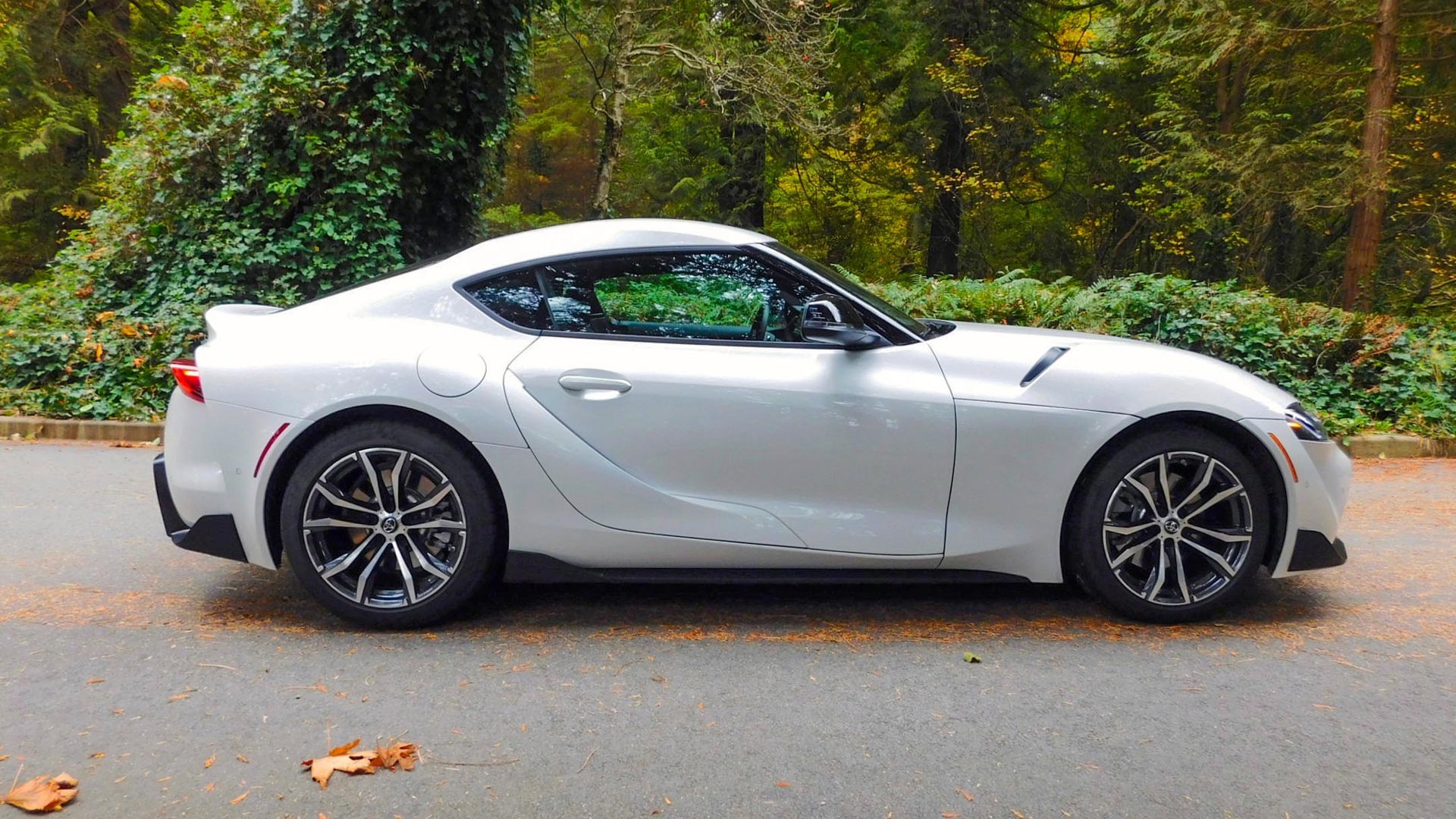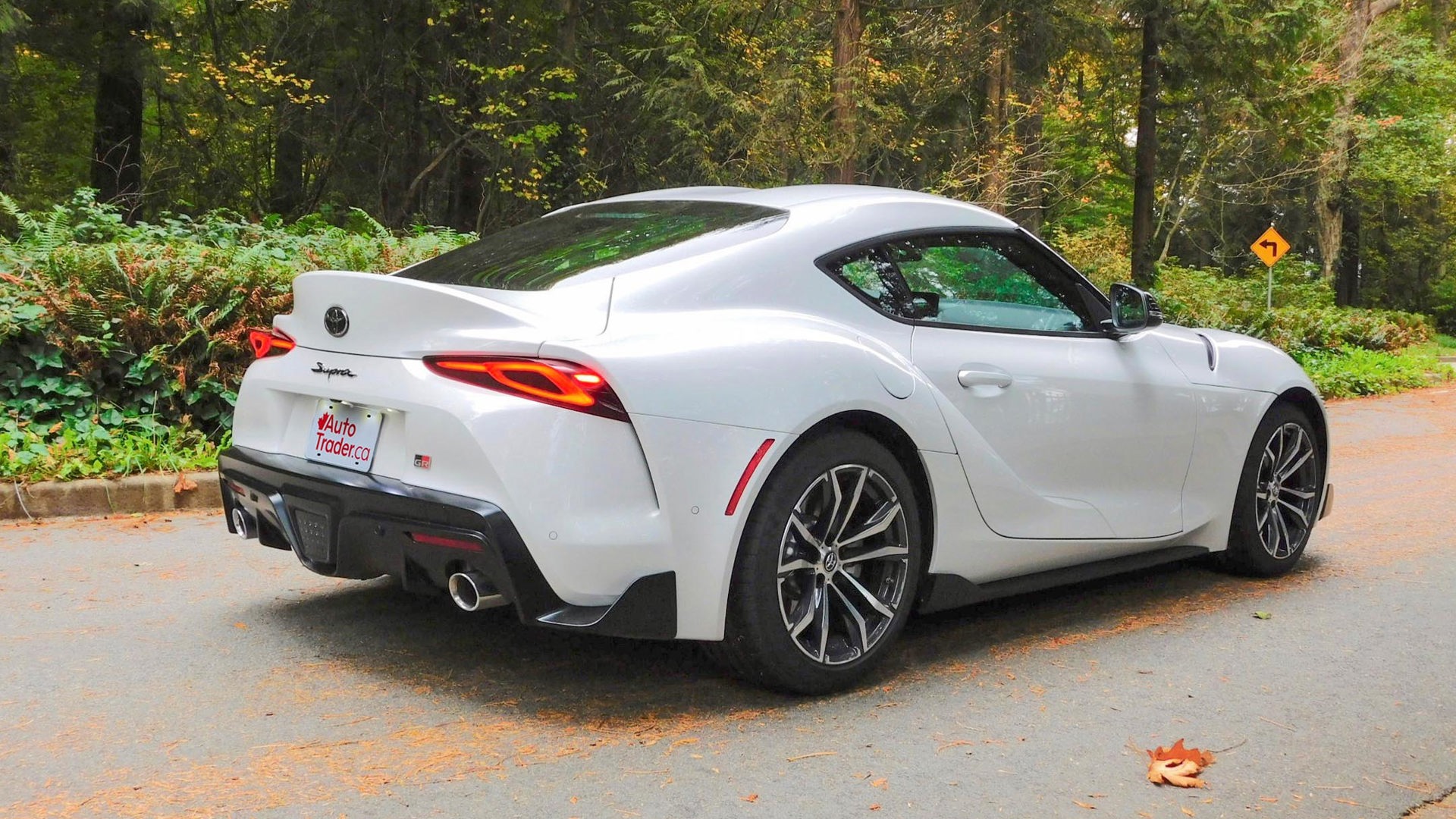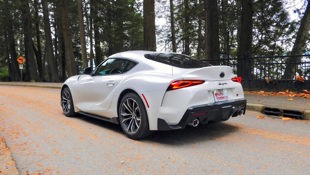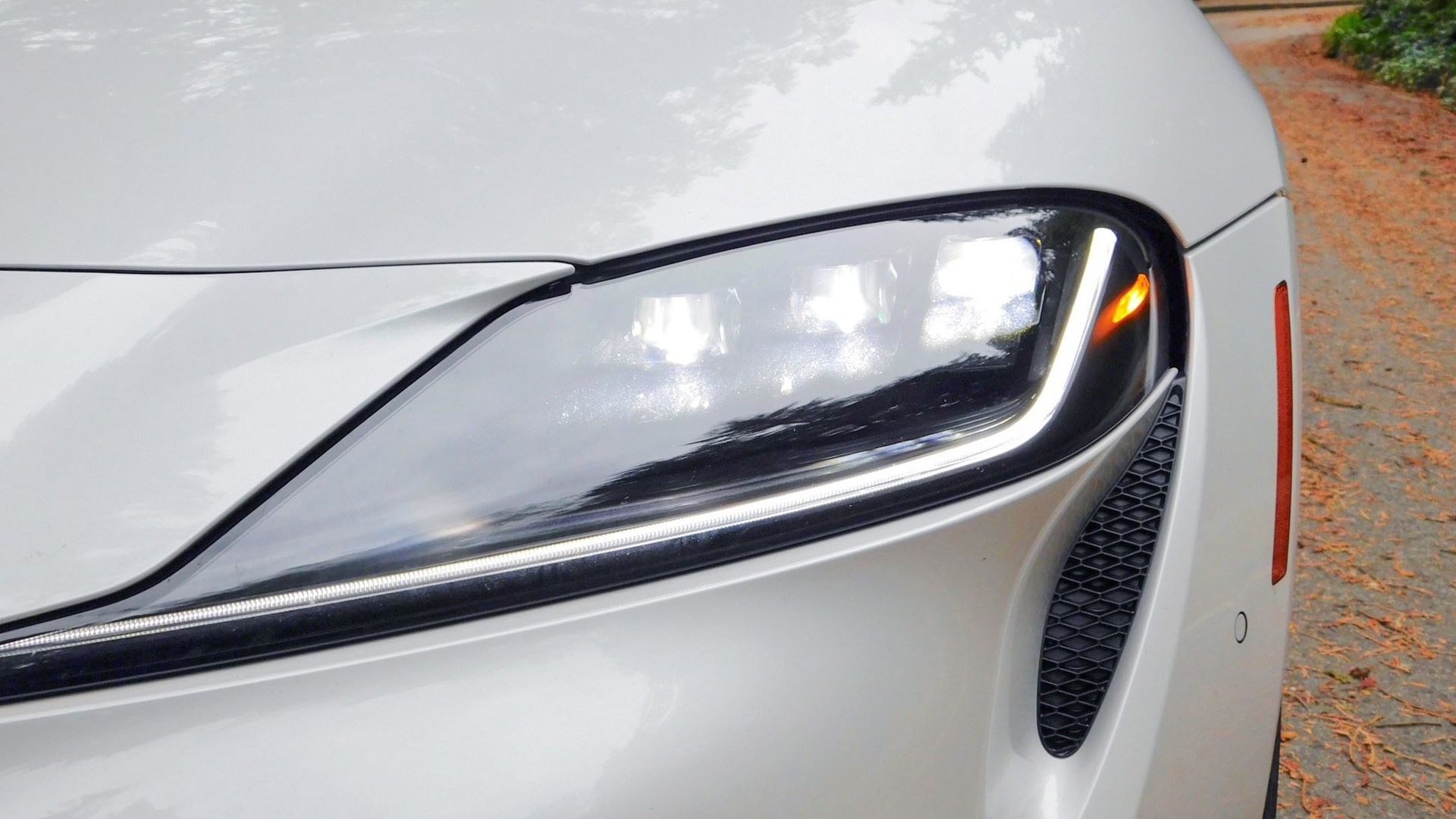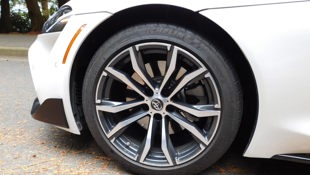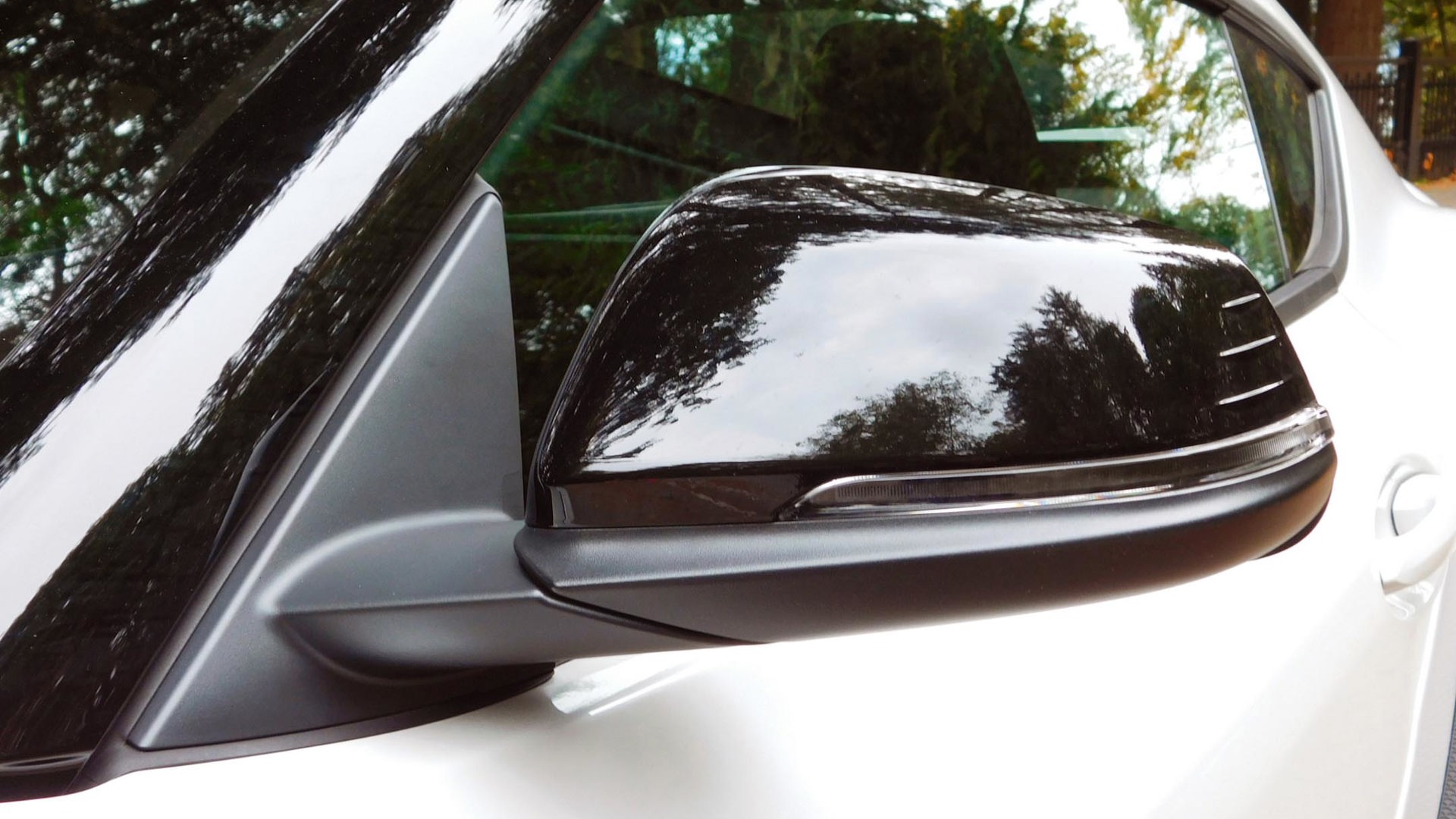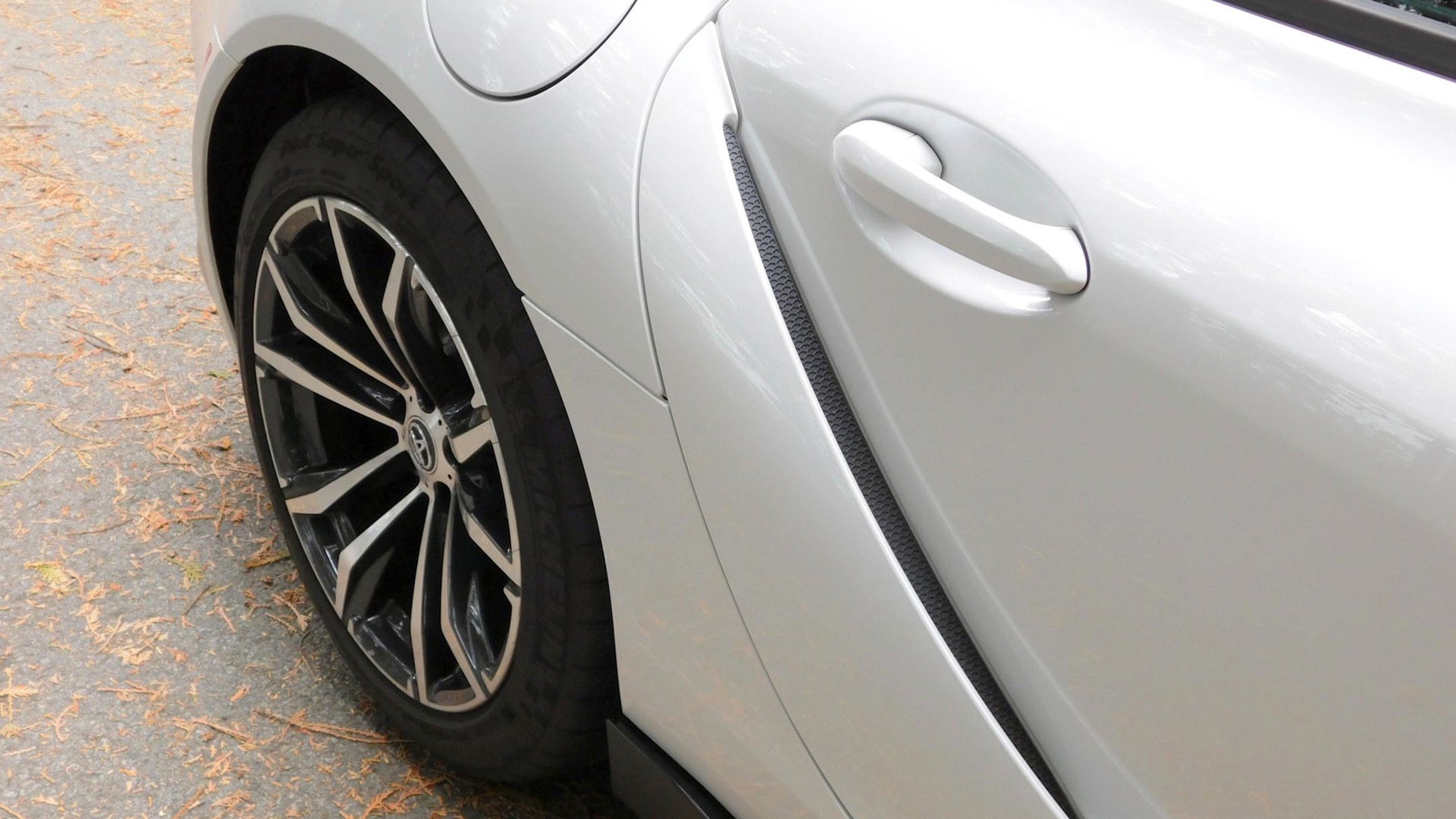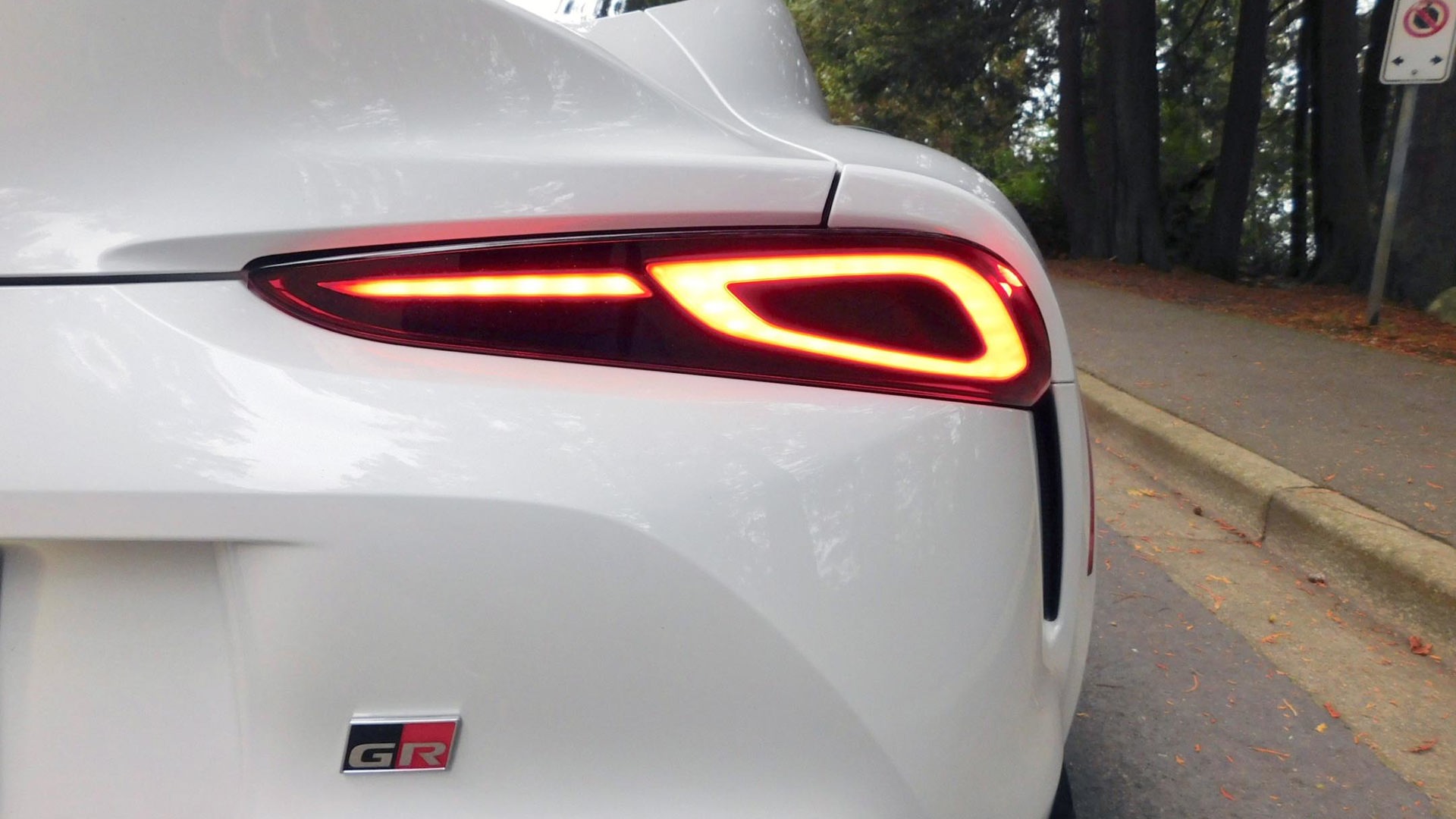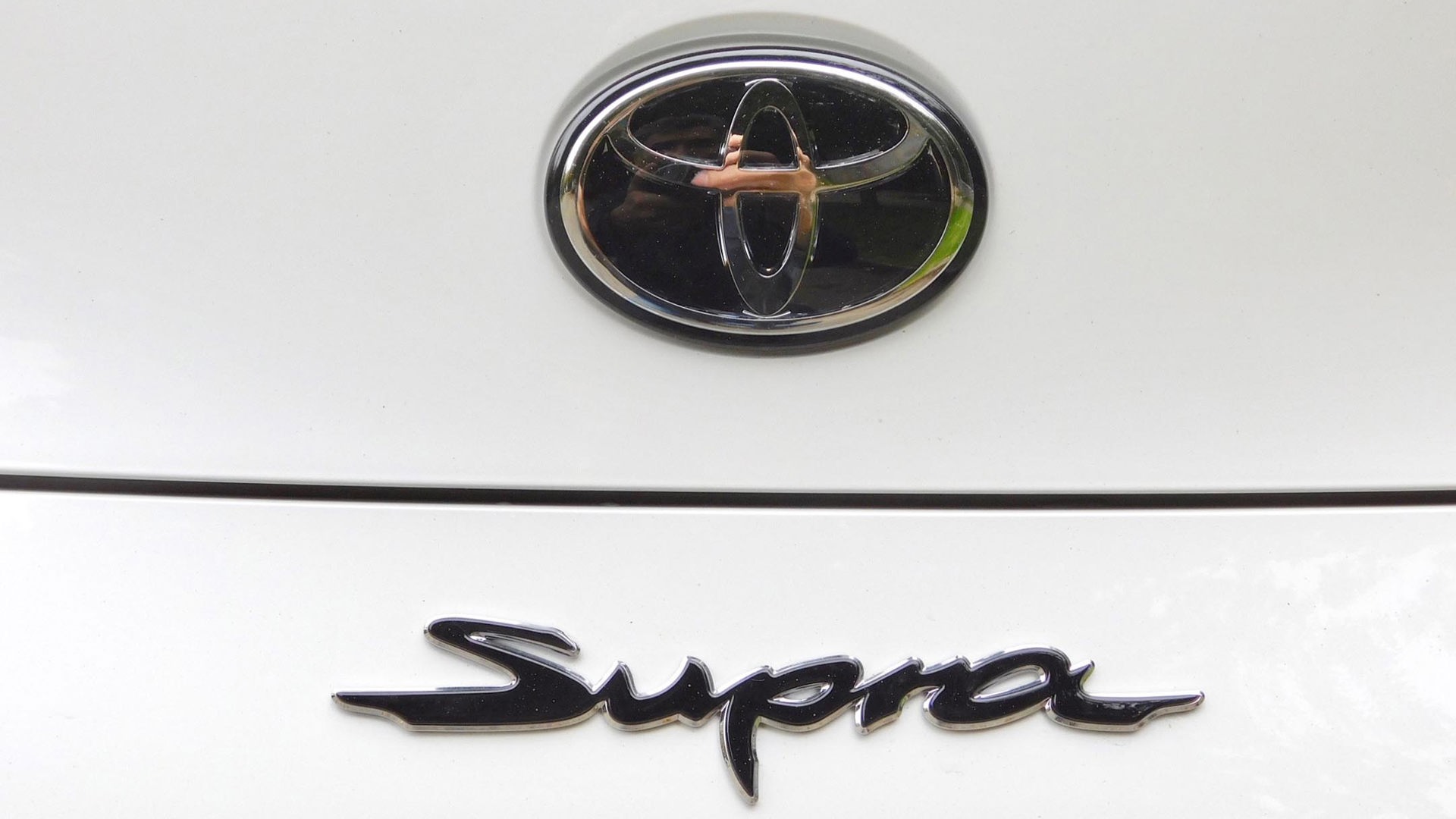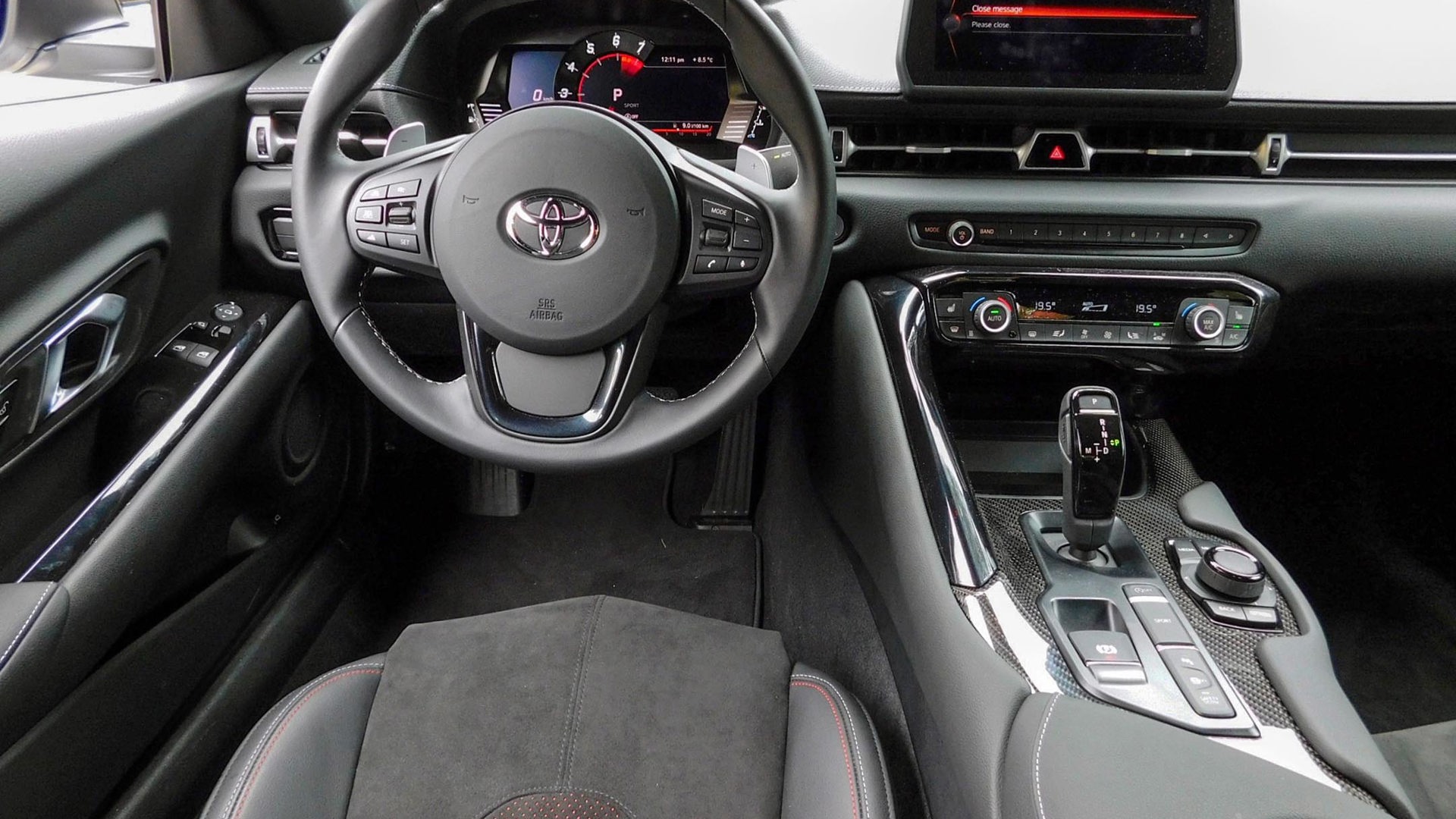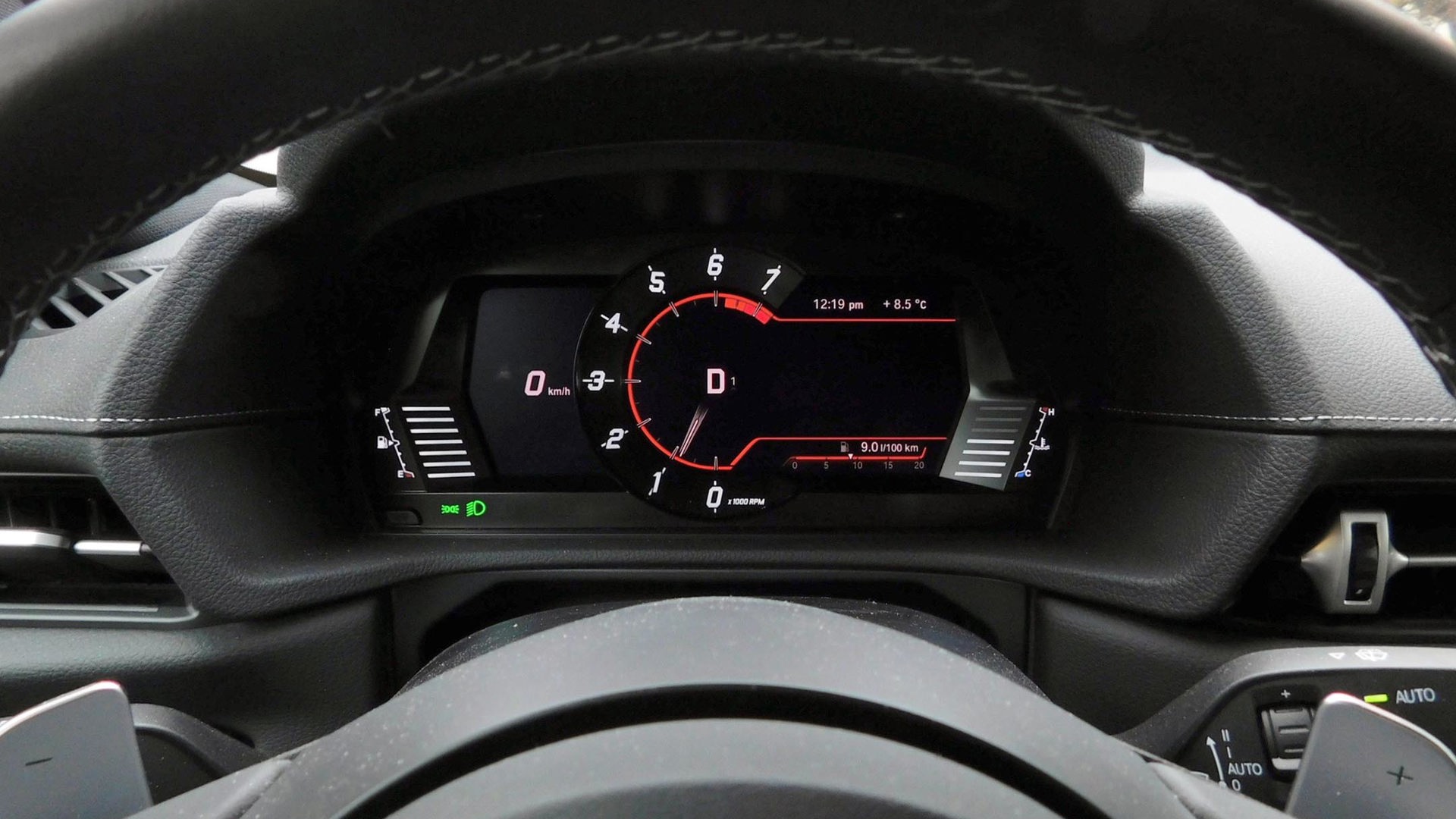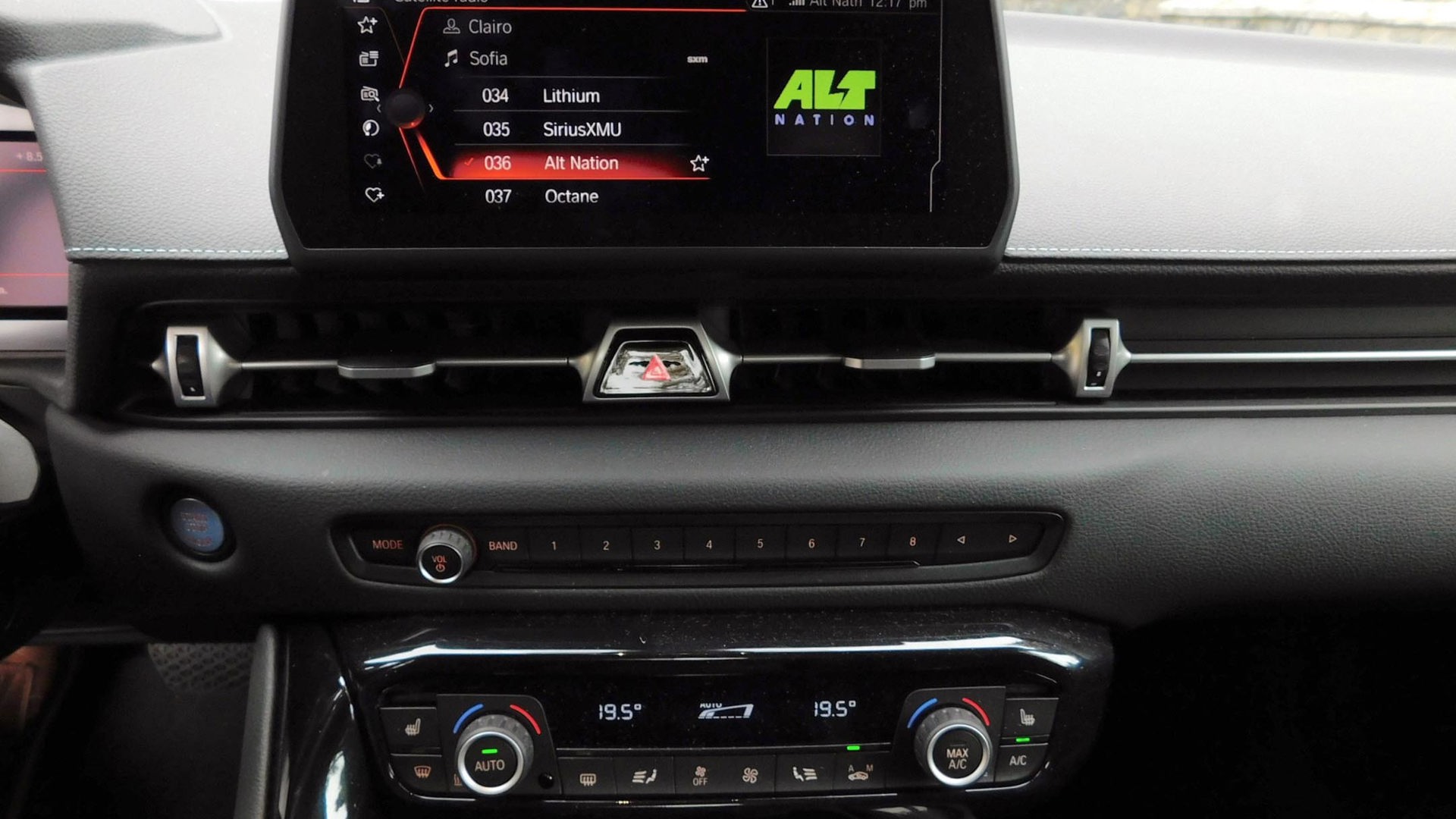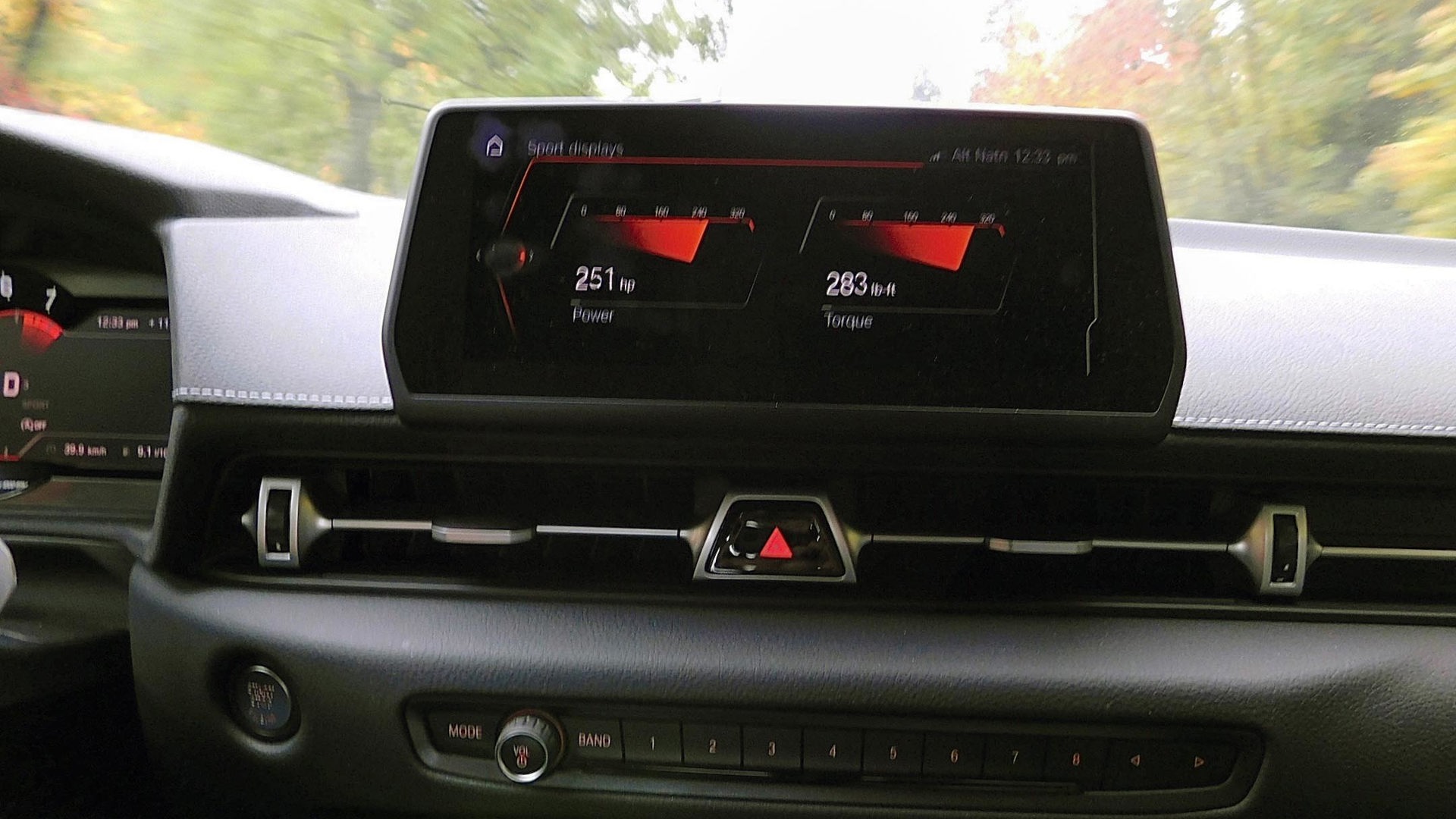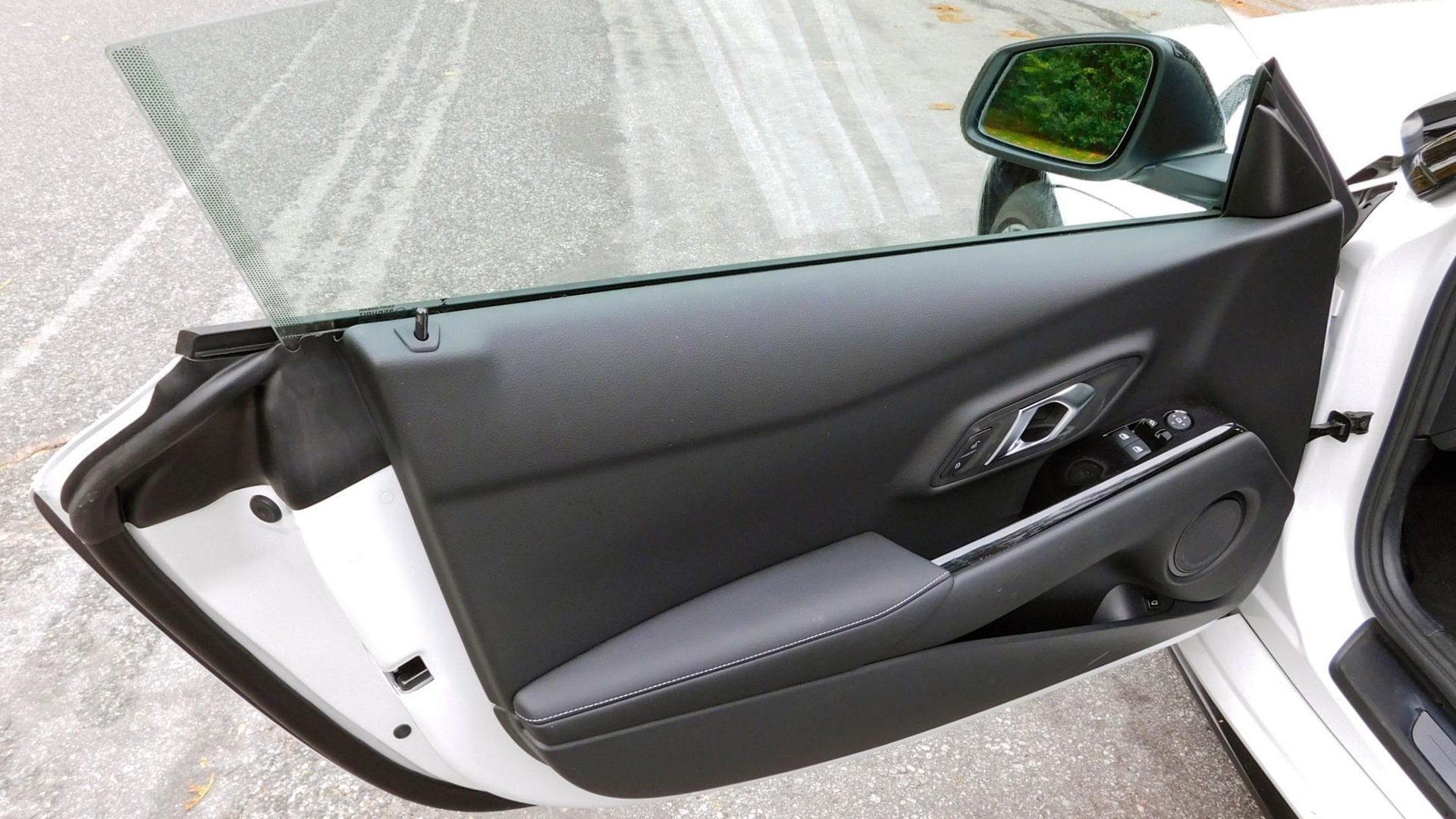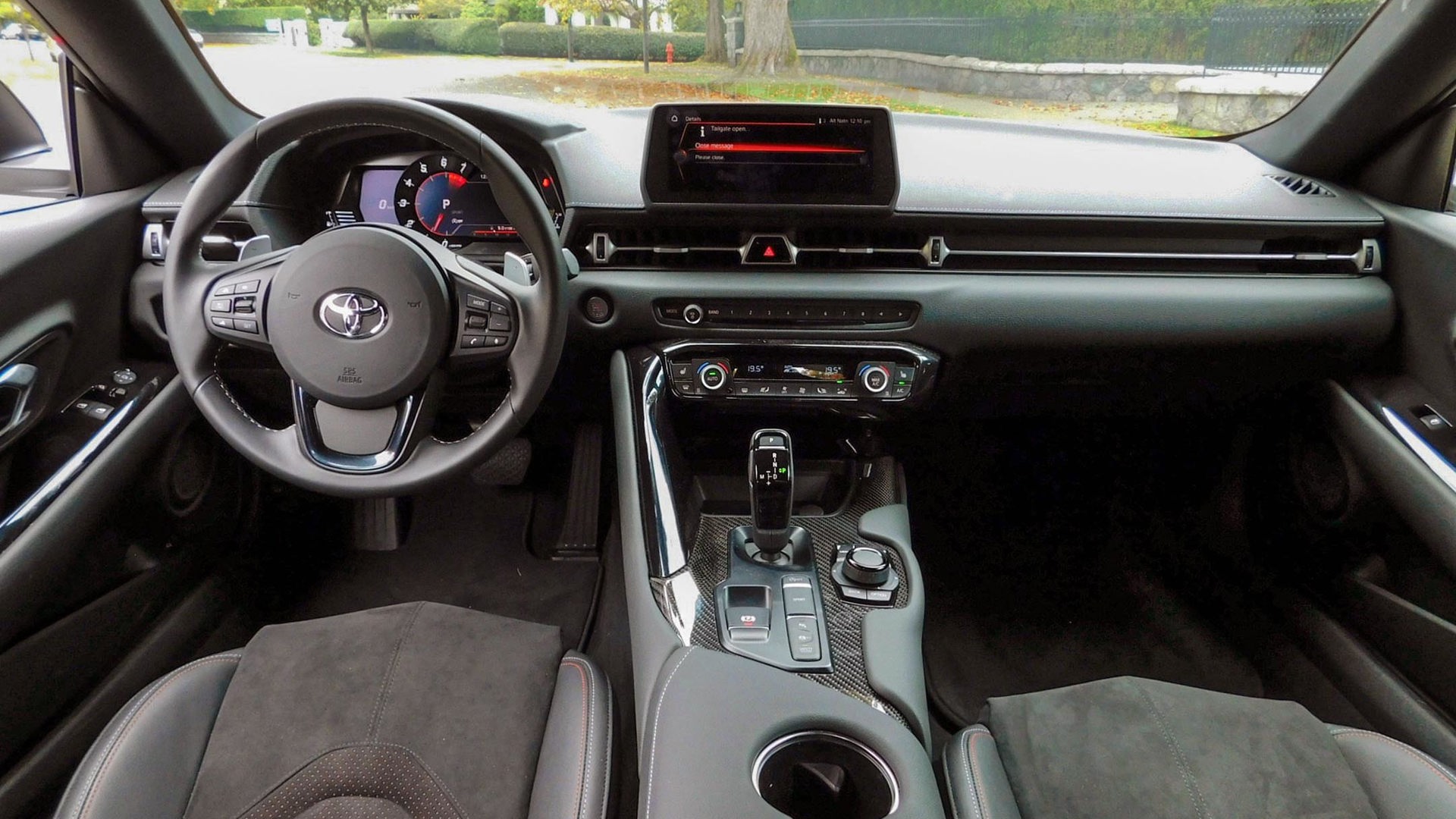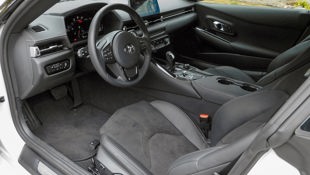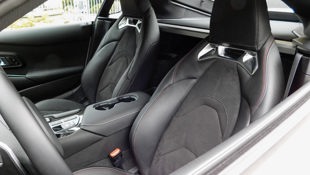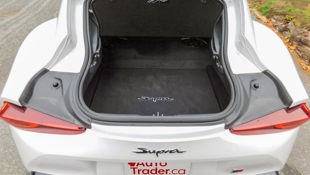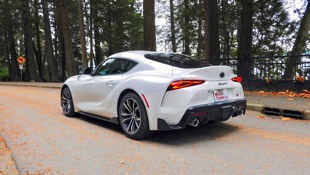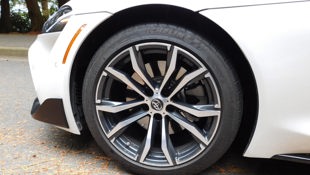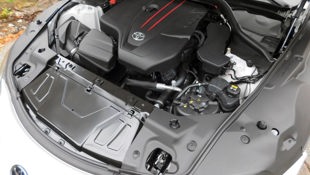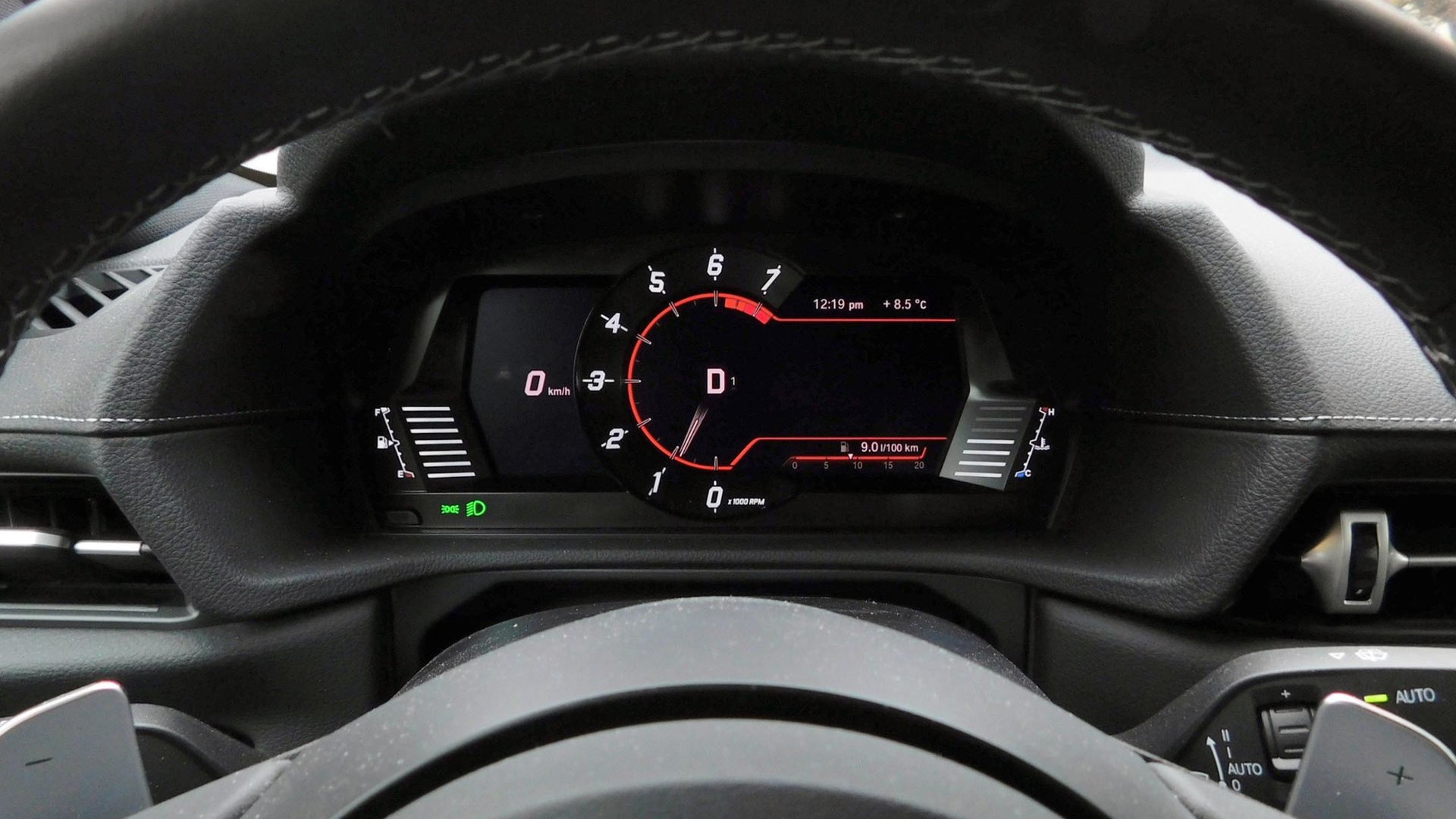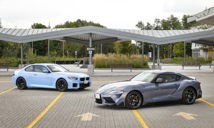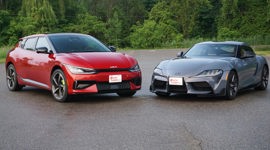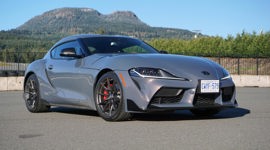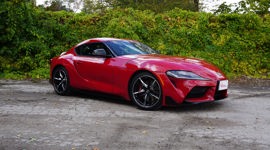 AutoTrader SCORE
AutoTrader SCORE
-
STYLING8/10
-
Safety8/10
-
PRACTICALITY7/10
-
USER-FRIENDLINESS8/10
-
FEATURES8/10
-
POWER8/10
-
COMFORT8/10
-
DRIVING FEEL9/10
-
FUEL ECONOMY8/10
-
VALUE7/10
When Toyota introduced the reborn Supra to North America for 2020, it offered only one engine choice: a turbocharged 3.0L inline six-cylinder, just like its legendary predecessor.
In other parts of the world, meanwhile, the Supra was available with a choice of engines: the 3.0L or a turbocharged 2.0L four-cylinder. With that wrong made right, the 2022 Toyota Supra 2.0 gives Canadian sports car shoppers an interesting – and potentially difficult – choice.
Styling: 8/10
With a long hood, short rear end, and minimal overhangs, the Supra has pleasing overall proportions. It’s exactly what you’d expect a sports car to look like, and more than a little reminiscent of the BMW Z4 roadster with which the Supra shares its underpinnings (the Supra was developed collaboratively with BMW and is essentially a hardtop version of BMW’s new roadster). The details are purely Japanese, however, with discontinuous angular cutlines and sharp details that recall Kanji writing symbols.
It’s a striking statement, although whether or not it’s entirely successful depends to some extent on where you stand. I like the look, but don’t love the plethora of fake plastic vents that do nothing except catch wet leaves and road debris. I do love Toyota’s entirely clandestine approach to badging, which means that only those who care to look closely at the brake calipers or wheel size will know whether the car is a 2.0 or 3.0 model.
Features: 8/10
Where the 3.0L car counts as a front-engine, rear-wheel-drive sports car, the Supra 2.0 ups the ante a little, keeping the entire engine aft of the front axle to qualify as a front-mid engine, rear-drive sports car. To balance the lighter powerplant and maintain 50/50 weight distribution (not to mention keeping the cost of entry down), Toyota also swapped the 3.0L car’s electronic limited-slip rear differential in favour of a purely mechanical unit, and jettisoned the adaptive dampers and power seats. The 2.0 also gets two-piston Brembo front brake calipers instead of four-piston units, and has 18-inch wheels instead of 19-inch ones, and a lesser audio system. All in all, it shaves 100 kg (220 lb) of weight off the car and gives the Supra 2.0 a distinctive – and very nimble – personality.
Power: 8/10
While the Supra 3.0’s turbocharged inline-six makes 382 hp and 368 lb-ft of torque, the Supra 2.0’s turbocharged inline-four makes 255 hp and 295 lb-ft of torque, with it fed to the rear wheels via the same eight-speed automatic transmission in either case. On paper, it’s a huge power difference, but the 2.0 makes up some of the deficit thanks to its lighter weight.
The 3.0 is still the quicker car, making the zero-to-100 km/h run in about 4.1 seconds versus 5.2 seconds for the 2.0. But this isn’t something you really notice when launching from stop lights up to the suburban speed limit – here, the 2.0 is still plenty quick enough to plaster a grin on your face (or land a ticket in your pocket). What you do notice is that the power delivery isn’t quite so immediate as it is in the 3.0, and the engine’s sweet spot is a little narrower. Stomp the go-pedal while driving at moderate speed, and it takes the Supra 2.0 just a beat or two to gather itself together and launch forward.
Driving Feel: 9/10
From behind the wheel, the Supra 2.0 delivers on its edgy styling’s promise. The suspension is tuned to the firm side of the sport/touring spectrum, and thanks to the car’s reasonably light weight and perfect 50/50 weight balance, the Supra 2.0 provides instant turn-in, crisp handling, and tenacious grip. It absolutely begs to be let loose on twisty roads, and will leave you smiling from ear to ear when you oblige.
In normal mode, the powertrain can feel a little laid-back and lackadaisical, always seeking the highest possible gear in its quest for fuel economy, but it perks right up in sport mode, and becomes properly entertaining if you switch to manual-shift mode, providing rapid-fire response and rev-matched downshifts using either the paddle shifters or console-mounted gear selector. A manual transmission isn’t on offer at this time, although it would be a perfect match with the car’s frisky nature. Brake performance is more than a match for the engine, and the Brembo four-wheel discs haul the Supra down from speed with confidence, although they can be a bit grabby at low speeds.
Comfort: 8/10
Once you perform the necessary calisthenics to lower yourself into the Supra’s snug cockpit, you’re rewarded with supportive, deeply bolstered sport seats wrapped in faux suede. While the seats in the 2.0 are manually operated instead of power-operated (as in the 3.0), they do get electric lumbar adjustment. There’s dual-zone climate control, backed up on chilly days by heated seats and a heated leather-wrapped steering wheel. The interior’s fit and finish is upscale in a very BMW kind of way, with good-quality soft-touch materials everywhere it matters, black carbon-fibre-style trim, an 8.8-inch tablet-style touchscreen perched on the dash, and a rotary infotainment controller on the console. The four-speaker audio system performs its job well and includes the expected Bluetooth capability and USB input, but it’s a decided downgrade compared to the 3.0’s 12-speaker system, and it doesn’t offer its embedded nav, satellite radio, or wireless Apple CarPlay.
The ride is decidedly firm as might be expected in a sports car, but not unpleasantly so, and the cabin is fairly well insulated from wind and road noise.
Practicality: 7/10
With room for only one passenger and about 290 L of oddly shaped trunk space (just enough for a weekend’s luggage or a week’s groceries for two), the Supra won’t be scoring any points as a family hauler, but it’s about as practical as you’d expect for a sports car.
Where the Supra loses some points is in-cabin storage, which is practically non-existent, and outward visibility, which is a bit bunker-like. Where it gains points is its abundance of creature comforts, which should make long-distance touring a pleasure. Headroom isn’t bad thanks to the double-bubble roofline, but taller drivers – and that includes those of us who barely crack 5-foot-11 – will find themselves ducking down to see overhead-mounted traffic lights when waiting in pole position. And while the double-bubble roofline does help with headroom, it eliminates the possibility of a sunroof, which may leave some potential purchasers looking longingly at Mazda’s folding-roof MX-5 RF.
User Friendliness: 8/10
Ingress and egress contortions aside, ergonomics in the GR Supra are well-sorted. Once you get used to the BMW-style gear selector, all controls fall easily to hand and make good logical sense, and the instruments and displays are clear, bright, and easily legible.
I found the infotainment screen easy enough to read and navigate (although there were a couple of moments of bafflement), and I appreciated being able to make inputs via either the touchscreen or the rotary controller. My one real gripe is the lack of an external hatch release – you need to either use your key fob to open the hatch, or open the driver’s door and press the interior hatch release button.
Safety: 8/10
Toyota and co-developer BMW both have solid reputations for safety, and the Supra 2.0 doesn’t disappoint. It gets a comprehensive suite of driver-assist technology including lane-departure warning with steering assist, blind-spot monitoring with rear cross-traffic alert, adaptive cruise control that works in stop-and-go traffic, forward collision warning with pedestrian detection and automatic emergency braking, traffic sign recognition, and automatic high-beam headlights. The Supra hasn’t been crash-tested by the Insurance Institute for Highway Safety (IIHS) or the United States National Highway Traffic Safety Administration (NHTSA) but its close cousin, the BMW Z4, achieved a five-star rating in official European crash-testing.
Fuel Economy: 8/10
Rated fuel economy for the Supra 2.0 is 9.4 / 7.3 / 8.4 L/100 km (city / highway / combined), which is roughly 1.0 L/100 km better than the 3.0 version across the board.
When I picked up my test car it was showing a combined average of 8.9 L/100 km over the previous 1,000 km. I was able to maintain this average for the first 75 km, and then completely obliterate it once I started having fun. When I returned the car it was showing an average of 9.4 L/100 km over 1,250 km, with my own mostly city consumption measuring just more than 12.0 L/100 km at the pump. This may seem rather a poor showing, but it reflects some properly spirited driving, and on a fun-per-litre basis it’s actually up there with some of the best.
Value: 7/10
With a base price of $58,300 including a non-negotiable freight charge of $1,790, the 2022 Toyota Supra 2.0 falls in the middle between the more richly featured and powerful Supra 3.0 (which starts at $69,610) and Toyota’s redesigned and rebadged 2022 86 (which got a power increase to 228 hp, offers a manual transmission option, and starts in the mid-$30,000 range).
For those who’d prefer the option of open-top motoring, the closely related BMW Z4 starts around $65,000, while Mazda’s MX-5 offers a manual transmission and prices out around $42,000 when similarly equipped ($45,000 or so for a similarly equipped RF folding-top version). This puts the Supra on the higher side of the value equation compared to its Japanese-built rivals, but makes it a bit of a bargain compared to its fellow German-built competition (the Supra is built in the same factory as the Z4).
The Verdict
With its delightful handling, upscale interior, and Goldilocks-style “just right” performance and pricing, the 2022 Toyota Supra 2.0 is a welcome addition to Toyota’s sports car lineup. While it doesn’t have the raw power of the six-cylinder version, and it lacks that car’s 12-speaker audio system and some of its go-fast goodies, the 2.0 doesn’t feel like a de-contented consolation prize. Instead, it provides much of what’s appealing about the Supra 3.0 in a lighter package that’s easier on the wallet both at purchase time and at the pumps.
Buyers tempted by open-top motoring will want to consider the Mazda MX-5 or BMW Z4, and those looking for the most powerful, well-equipped Supra will want to opt for the 3.0. But if you want a nicely fitted hardtop sports car that offers balanced performance, the Supra 2.0 is certainly worth a look.
| Engine Displacement | 2.0L |
|---|---|
| Engine Cylinders | Turbo I4 |
| Peak Horsepower | 255 hp @ 5,000–6,500 rpm |
| Peak Torque | 295 lb-ft @ 1,550 rpm |
| Fuel Economy | 9.4 / 7.3 / 8.4 L/100 km cty/hwy/cmb |
| Cargo Space | 290 L |
| Model Tested | 2022 Toyota GR Supra 2.0 |
| Base Price | $56,510 |
| A/C Tax | $100 |
| Destination Fee | $1,790 |
| Price as Tested | $58,400 |
|
Optional Equipment
None
|
|
